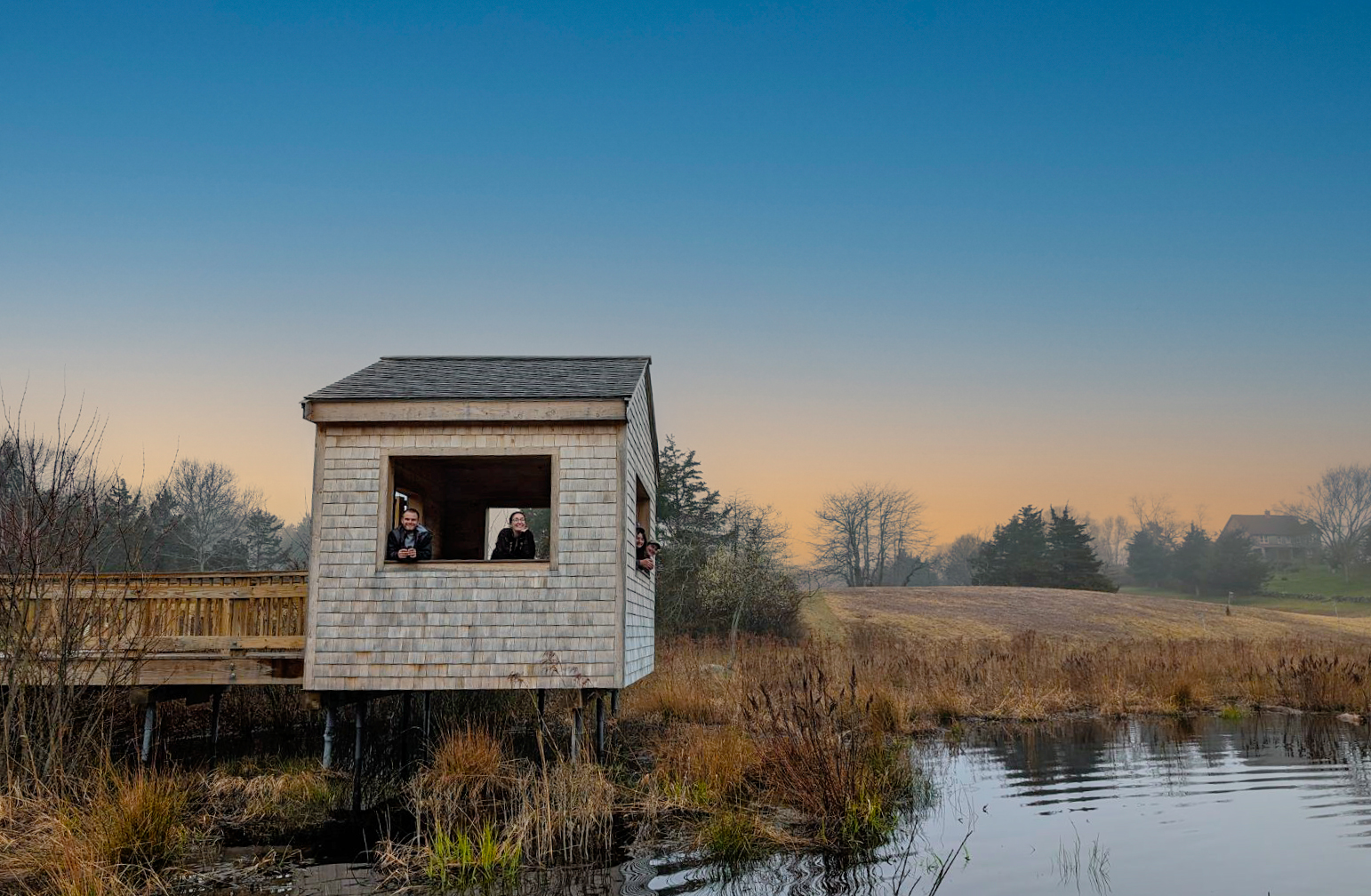This article was originally published in The Cape Codder on September 23, 2013. It was written by Rich Eldred. View the original article here.
“The red knot population is declining at an alarming rate, faster than any other bird, seven to eight percent each year,” said Brian Harrington of the Manomet Center for Conservation Sciences. “In 20 years that’s virtual extinction. Red knots are about to be listed as endangered species. It will probably happen late this year or next year. So we have a big conservation challenge.”
Harrington is the author of “The Flight of the Red Knot” and he spoke to the Orleans Conservation Trust on Tuesday at the Orleans Yacht Club.
Shorebirds are not gulls, ducks or great blue herons but the smaller birds, like sandpipers and plovers, that dart about the mudflats feeding on clams, worms, snails etc. The red knot is the largest sandpiper in the new world.
“It has beautiful plumage in the spring and early summer,” Harrington said. “They fly into the high Arctic where no birds want to live and where there are no predators either. They live in the winter at the tip of South America.”
That sets up an incredibly long migratory flight, and what makes remarkable is that the birds tend to make it in one or two stops – one of them, on the return trip south, is Pleasant Bay on Cape Cod.
“They fly from Patagonia (in Chile and Argentina) to Delaware Bay,” Harrington said. “They arrive at the end of May when the horseshoe crabs are laying eggs. They are dependent on that resource to finish the rest of the migration to the Arctic on a single flight.”
The birds need to fatten up, to the point where they can barely take off. Then they burn the calories while they fly north at 15,000 to 20,000 feet.
“Most birds fly 100 to 150 miles, stop and feed, fly 100 to 150 more, stop and feed, until they get to their wintering grounds,” Harrington said. “Shorebirds fly a couple of thousand miles without stopping.”
It’s an alternative lifestyle. One in which large flocks descend on feeding grounds, which makes them vulnerable to predators, hunters, or environmental disruption.
“In flight the bird burns up a lot of muscle tissue. The heart decreases in size, the liver decreases in size,” Harrington noted. “So it needs to replace the protein of the muscle tissues. They are really morphing for these long flights.”
The bird’s weight will double (from 100 to 220 kilograms) prior to the flight.
The red knot story has been pieced together by research teams working all over the hemisphere; from Patagonia to Surinam to Delaware. One of those teams was working this week, on Monomoy National Wildlife Refuge, tagging birds with color-coded bands. They’ve also used geo-locater tags to track individual birds, provided they can recapture the red knot to download the data.
One thing they’ve learned is that the migration has split into two destinations – but we’re getting ahead of ourselves.
On tracked bird flew 8,000 kilometers without a stop. It was recently spotted eating mussel spat in northern Quebec. Mussels also draw the red knot to Cape Cod. On their way south they used to stop at Billingsgate Island in Wellfleet and in Duxbury. No more. The lone stopover is in Pleasant Bay to eat mussel spat behind Little Sipson’s Island, or off Monomoy in Chatham.
“The mussel flats at Little Sipson’s Island are quite a treasure for red knots, godwits, sanderlings and dowagers,” Harrington observed.
Market hunters decimated the birds at Billingsgate, crawling into the flocks and biting their heads off before tossing them into a sack. That led to the passage of shorebird protection laws in the 1920s. So the populations rebounded. But Billingsgate sank below the sea and the Duxbury population fell from thousands in the 1970’s to nothing today.
“They’re pretty much dependent on the Pleasant Bay system,” Harrington said.
There are now two wintering zones – Patagonia and the Caribbean up to Florida.
“So some are flying an extraordinary distance and some aren’t. There must be an advantage to flying all that distance. Summer days are long, 14 hours or more, and they’re basically living in an endless summer,” Harrington pointed out. “In Patagonia they’re finding something to eat, on Cape Cod it’s mussels. In the Caribbean they eat coquina clams. Red knots are specialists at eating bivalves. That’s why it’s a little puzzling they feed on horseshoe crab eggs coming north.”
The theory is that after a long flight, and a smaller stomach, the birds can’t handle clam or mussel shells.
Red knots in both Delaware and Pleasant Bay compete with humans for food. Horseshoe crabs are harvested for bait and for their blood, which is used in the pharmaceutical industry. Mussels turn up in spaghetti sauce. However, the red knots headed to the Caribbean stay longer and feed on a more varied diet; worms, shrimp, small clams and other morsels and seem to be in better shape. It’s the birds loading up for the long trip to Patagonia and back hat are most imperiled.
“Their food, horseshoe crab eggs is less abundant because they’re over-harvesting crabs in Delaware Bay and the mortality of birds that don’t get to the threshold weight is very high,” Harrington said. “I’m confident this accounts for the decline in the red knot.”
There is work on artificial baits (horseshoe crabs are used to bait for eels and conchs) but fishermen are reluctant to adopt them.
Since the red knots are spread over such a huge area many countries are involved with protecting this or that stage of their life.
“The birds are competing with our own needs,” Harrington noted. “It’s taken a long time to get a balance between harvesting horseshoe crabs and the needs of migratory shorebirds but we’re almost there. It’s a very tedious and politically sparked effort but it is happening.”





 Back to all
Back to all